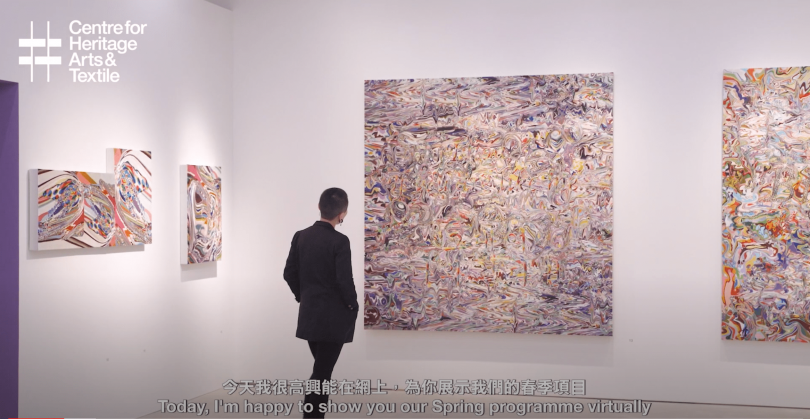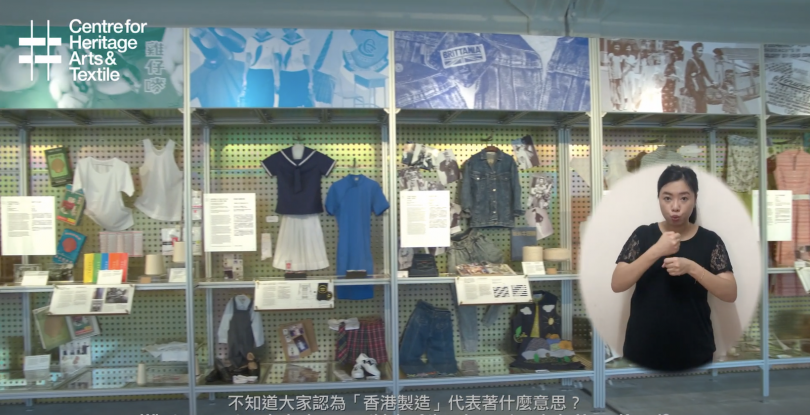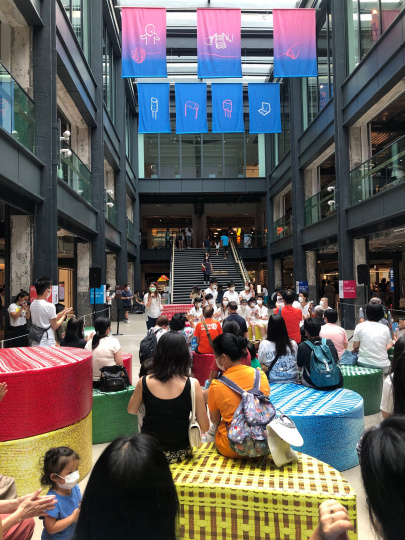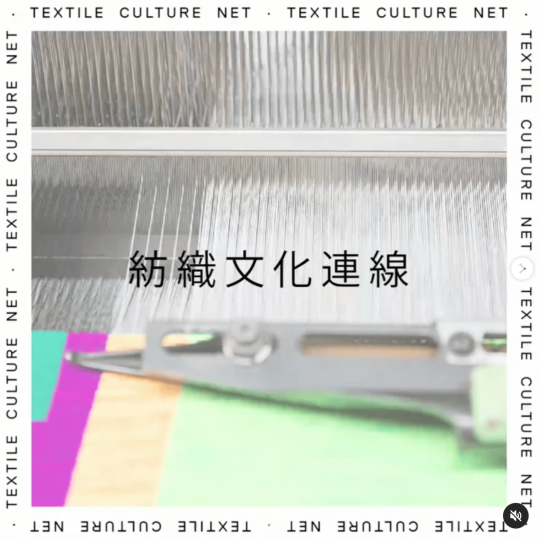Series: Arts on the Globe: Challenges and Prospects under the COVID-19 pandemic
In this series we report on how arts and culture have faced up to the challenges of coronavirus in Europe, North America and neighboring countries.
2021/11/19
CASE04
Hong Kong: What Opportunities Does COVID-19 Offer the Arts?
CHAT (Centre for Heritage, Arts and Textile) Executive Director and Chief Curator
Mizuki Takahashi
Series: Arts on the Globe
In this series we report on how arts and culture have faced up to the challenges of coronavirus in Europe, North America and neighboring countries
From Protests to Pandemic
Between the protests of 2019, the COVID-19 pandemic that followed hot on its heels, and the national security law introduced in the midst of all this, Hong Kong has experienced a period of dizzying social change. I was so busy to manage the CHAT, which was opened in March 2019, in such an unpredictable situation. Thus, to be honest, I did not have time to observe how other art museums and cultural institutions in Hong Kong responded. Consequently, this article is first and foremost a collection of my personal jottings from CHAT.
It was while I was traveling to Mexico from Hong Kong via Japan’s Narita Airport for the Lunar New Year vacation that rumors of a new form of influenza causing fatalities in China began to take on an air of credibility. Narita Airport was packed with tourists looking forward to a holiday in Japan. At a pharmacy in the airport, a long line had formed at the register as cautious travelers concerned about the spread of the novel coronavirus queued to buy masks, but I headed straight to Mexico without giving the gravity of the situation a second thought. In the middle of my two-week break, I saw news reports on social media of an explosion in case numbers in China and shortages of masks and alcohol-based hand sanitizer throughout East Asia. Although COVID had not yet reached Mexico’s shores, I rushed out to purchase masks and sanitizer. On my way back, I saw more passengers wearing masks on the plane and there was not a single mask to be bought in Narita Airport’s pharmacies by the time I transferred there again. However, when I landed at Hong Kong International Airport in early February, I was able to get through immigration as smoothly as usual and return to my home.
In fact, while I was savoring a carefree holiday in Mexico, back in Hong Kong the CHAT office was beset by a growing air of tension. The new virus that emerged from China undoubtedly rekindled bitter memories for the people of Hong Kong, who had experienced the harm caused by the severe acute respiratory syndrome (SARS) outbreak in 2003, which claimed around 300 lives. The Lunar New Year is a major celebration in Hong Kong and many people go back to China to enjoy the festivities with relatives living on the mainland. Numbers of tourists visiting Hong Kong from the mainland also peak around this time. Although flights and high-speed rail services from Wuhan stopped operating on January 24, it was still possible to travel between Hong Kong and mainland China. Accordingly, after the Lunar New Year holiday, the office’s HR department sent out a request for anyone who had traveled to China within the past 14 days to report immediately and border measures to prevent the spread of infection began. More specifically, although I did not actually have to quarantine after my arrival in Hong Kong, I was immediately plunged into working from home and we switched our meetings to Zoom.
Around that time, CHAT was hosting the solo exhibition by Japanese textile designer, Reiko Sudo, the director of NUNO, but we had to close the gallery temporarily for staff’s working from home mode. CHAT was ultimately closed for 26 days, so we decided to extend the exhibition period to compensate. While CHAT was closed, I had to deal with the labor management of frontline staff such as security guards and those working on the gallery’s reception desk. Whereas curatorial and administrative work could continue from home, frontline staff had nothing to do when the gallery was closed. As we had a meeting of the board of directors to approve the budget scheduled around this time, I needed to create work that these staff could do at home, so that we could avoid a reduction in our personnel budget. Incidentally, staff whose work required them to come into the office were obliged to record their body temperature upon entering and leaving. In addition, masks and hand sanitizer were distributed to all staff free of charge (a policy still in operation as of October 2021).
Museum Management During a Pandemic
Perhaps thanks to the Hong Kong government’s prompt initial response, we saw no overwhelming increase in case numbers. CHAT’s staff went about their work behind the scene, taking down the winter exhibition and preparing for the group show by contemporary artists due to begin in March. However, the COVID-19 world pandemic began and all the artists who planned to come to Hong Kong from China, the U.S., Thailand, and South Korea to install their work had to cancel their visits. As Japan had few cases to start with, it was still possible to enter Hong Kong from Japan, so staff from Reiko Sudo’s studio came over to take down her exhibits and Izumi Kato was able to avoid having to quarantine when he arrived to prepare for the forthcoming group show. Although there were concerns that the arrival of artworks might be delayed, because people in other countries had started working from home, these proved unfounded. And so, for the first time ever, we installed exhibits through online supervisions of the artists who could not come to Hong Kong. It was around this time that mask-wearing became mandatory in public places and limits were imposed on the number of people who could sit at a table in restaurants. Large groups were no longer able to get together to eat and drink, and eateries began to operate with reduced opening hours. Naturally, as a consequence, we had to cancel the exhibition opening, which would normally have been the scene of lively social interaction.
Alas, our joy at having been able to open the exhibition turned out to be fleeting, as a fresh increase in case numbers in Hong Kong meant a return to working from home. CHAT shut its doors again, but because we had already experienced this before in February, we were able to transition quite swiftly to activities centered on the production of digital content during our March closure. From an organizational management standpoint, it is really important to ensure that staff motivation does not diminish during intermittent gallery closures and periods of working from home. This is because misgivings about the social significance of cultural activities may arise among staff working in cultural facilities if they feel their work is not valued by society in times of crisis.
While CHAT is run by a non-profit foundation, we rely on a private company for our management and operational budget, so it was vital to ensure that our organization was visibly active even when our doors were closed. The government of Hong Kong provided financial compensation for expenses and lost revenue from events that had to be canceled due to COVID, and I would like to note that this was paid out quite speedily. More specifically, as of September 4, 2020, the Hong Kong government had paid out subsidies amounting to HK$124 million (about ¥1.815 billion) to 860 arts organizations and projects, and more than 5,100 workers in the arts sector. It subsequently added a further HK$150 million (about ¥2.2 billion).*1

The curator’s video tour of Unconstrained Textiles: Stitching Methods, Crossing Ideas, the special exhibition that had to close immediately after opening.
Thus, CHAT remained fully active even while our physical doors were closed. Our younger staff took the lead in producing content such as a virtual video tour of the newly opened group show and online talk events with the artists.
What impressed me the most about our organization was that, while working from home, our staff gained confidence from having been able to undertake time-consuming initiatives that they would normally have been too busy to take on. Most notably, young staff members decided to produce a virtual video tour with sign language interpretation for people with hearing impairment. This resulted in the production of no less than 72 pieces of digital content between the beginning of the pandemic and early November last year. *2 。

Virtual video tour of the permanent exhibition with sign language interpretation, produced while the gallery was closed due to the pandemic
While the world was blanketed with restrictions on movement, CHAT took an initiative in setting up a group called Textile Culture Net with art museums and arts centers in the Netherlands, Poland, and Italy that are trying to break free from the conventional paradigm of art museums focused on textiles. We hold regular meetings and curate online exhibitions via Instagram every other month.
While Hong Kong continues to implement measures close to a full lockdown, including working from home, reduced restaurant operating hours, and restrictions on customer numbers in shops, it is at times like these that its incredible adaptability is showcased to full effect. When we postponed a solo exhibition by a Chinese artist planned for the summer of 2020 and hastily switched to an exhibition of items from our collection, everything went astonishingly smoothly. And when we opened up, our exhibitions attracted a steady stream of Hong Kongers, exploring new facets of their home city instead of traveling abroad. As a result, visitor numbers reached a level similar to pre-pandemic figures (they were much lower during the protests in 2019).

An event held to coincide with Interweaving Poetic Code, which opened after CHAT resumed its activities
Incidentally, Hong Kong is famous for hosting one of the world’s most prestigious art fairs, Art Basel Hong Kong. While the spring 2020 event was canceled, a mini edition organized by a number of Hong Kong galleries went ahead the following November. With Hong Kong imposing strict quarantine restrictions on travelers arriving from other countries, what was once a cosmopolitan city has entered a phase reminiscent of Japan’s erstwhile policy of national isolation. However, Art Basel Hong Kong took place in May 2021, with local staff from Hong Kong handling physical operations on behalf of the overseas galleries invited to participate. A digital art fair held in October to promote NFT art is just one example of thriving activities in this area. There was an immediate reaction to the pandemic in the commercial art world, where the socioeconomic situation is instantly reflected in business. Art industry figures working for auction houses and commercial galleries swiftly set up a digital platform called Art Power Hong Kong to distribute announcements about networking events and exhibitions. This degree of vitality is typical of Hong Kong. Turning to nonprofit cultural organizations, one activity that left an impression on me was the paid virtual visits to artists’ studios during the pandemic planned by the Para Site alternative space in an effort to provide artists with financial support in the form of a fee for their participation in the project. However, as CHAT, Para Site, and other nonprofit arts organizations do not have the collaborative platforms or organizational might of commercial galleries, so each body’s activities were disparate, with only weak ties between them. November 2021 sees the long-awaited opening of one of Asia’s largest art museums, M+. Although Hong Kong might feel sealed off from the outside world because of the border restrictions, its residents have the option of visiting exhibitions and art museums within the city as an alternative to overseas travel. This current situation presents cultural facilities with an opportunity to build relationships with each other while engaging fully with local communities and working together to grow their audiences.
【Editorial Viewpoints】
Like the one focused on Taiwan, this report describes a museum’s response to the COVID crisis. Mentioned here for the first time in this context is the issue of labor management at museums amid the pandemic. While the reports from the U.S. and Taiwan did touch upon the employment situation at museums and in other parts of the arts sector, this is the first time we have been given a glimpse into the real nuts and bolts of it.
I want to draw particular attention to the following two points. First, when we talk about jobs at museums, curators tend to be the first to spring to mind, but we also have to consider what working from home looks like for the frontline staff, who might not be directly involved in planning exhibitions, but who make up the majority of museum employees. Then the next question is, in what sense can working from home provide such workers with a real sense of supporting culture, rather than simply completing tasks created to replace their regular work amid the pandemic. In Japan, too, debate around working environments in the realm of arts and culture has been ongoing for some time, but at the same time, there would seem to be a need to turn our attention to issues of organizational psychology, including the mental wellbeing of the people working in this domain. (Mitsuoka)
Related Article
- Introduction
- CASE01
U.S: Transformation caused by the pandemic, transformation ongoing under the pandemic
Kosuke Fujitaka (NY Art Beat co-founder) - CASE02
Art in the Face of COVID-19 – Australia
Julia Yonetani (Contemporary Japanese-Australian Artist Duo “Ken + Julia Yonetani”) - CASE03
Taiwan: The state of museums in Taiwan amid the COVID-19 pandemic
Huang Shan Shan (Director, Jut Art Museum) - CASE05
The Outlook for Japan through the lens of Germany’s pandemic-related cultural policy (Part 1)
Yuki Akino (Associate Professor, Dokkyo University) - CASE05
The Outlook for Japan through the lens of Germany’s pandemic-related cultural policy (Part 2)
Yuki Akino (Associate Professor, Dokkyo University) - CASE06
Reflections: Preparing fertile ground for culture beyond the COVID-19 pandemic (Part 1)
Shunya Yoshimi (Professor, Interfaculty Initiative in Information Studies, The University of Tokyo) - CASE06
Reflections: Preparing fertile ground for culture beyond the COVID-19 pandemic (Part 2)
Shunya Yoshimi (Professor, Interfaculty Initiative in Information Studies, The University of Tokyo)


